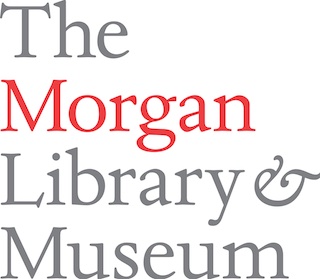Sight Reading: Photography and the Legible World
February 19 through May 30, 2016
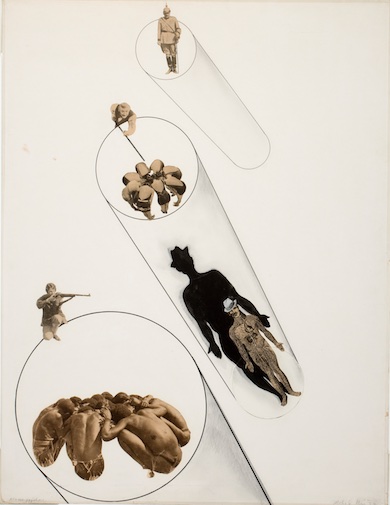
Massenpsychose
As its name declares, photography is a means of writing with light. Photographs both show and tell, and they speak an extraordinary range of dialects.
Beginning February 19, the Morgan Library & Museum explores the history of the medium as a lucid, literate— but not always literal—tool of persuasion in a new exhibition, Sight Reading: Photography and the Legible World. A collaboration with the George Eastman Museum of Film and Photography, the show features more than eighty works from the 1840s to the present and reveals the many ways the camera can transmit not only the outward appearance of its subject but also narratives, arguments, and ideas.
Over the past 175 years, photography has been adopted by, and adapted to, countless fields of endeavor, from art to zoology and from fashion to warfare. Sight Reading features a broad range of material—pioneering x-rays and aerial views, artifacts of early photojournalism, and recent examples of conceptual art—organized into groupings that accentuate the variety and suppleness of photography as a procedure. In 1936, artist László Moholy-Nagy (1895–1946) defined “the illiterate of the future” as someone “ignorant of the use of the camera as well as the pen.” The JPEG and the “Send” button were decades away, but Moholy-Nagy was not the first observer to argue that photography belonged to the arts of commentary and persuasion. As the modes and motives of camera imagery have multiplied, viewers have continually learned new ways to read the information, and assess the argument, embodied in a photograph.
“Traditional narratives can be found throughout the Morgan’s collections, especially in its literary holdings,” said Colin B. Bailey, director of the Morgan. “Sight Reading encourages us to use a critical eye to read and discover the stories that unfold through the camera lens and photography, a distinctly modern, visual language. We are thrilled to collaborate with the Eastman Museum, and together unravel a rich narrative, which exemplifies photography’s deep involvement in the stories of modern art, science, and the printed page.”
Image: László Moholy-Nagy (American, b. Hungary 1895–1946), Massenpsychose (Mass Psychosis), 1927. Collage, pencil and ink. George Eastman Museum, purchase with funds provided by Eastman Kodak Company. Courtesy of George Eastman Museum. © 2015 Artists Rights Society (ARS), New York / VG Bild-Kunst, Bonn.
~~~~~~~~~~~~~~~~~~~~~~~~~~~~~~~~~~~~~~~~~~
THE EXHIBITION
Sight Reading cuts across conventional historical and geographic divisions. Featuring work by William Henry Fox Talbot (1800–1877), Eadweard Muybridge (1830–1904), John Heartfield (1891–1968), Lewis Hine (1874–1940), Harold Edgerton (1903–1990), John Baldessari (b. 1931), Sophie Calle (b. 1953), and Bernd and Hilla Becher (1931–2007; 1934–2015), among many others, the exhibition is organized into nine “conversations” among diverse sets of works.
—————————————–
I. The Camera Takes Stock
Photography’s practical functions include recording inventory, capturing data imperceptible to the human eye, and documenting historical events. In the first photographically illustrated publication, The Pencil of Nature (1845), William Henry Fox Talbot used his image Articles of China to demonstrate that “the whole cabinet of a … collector … might be depicted on paper in little more time than it would take him to make a written inventory describing it in the usual way.” Should the photographed collection suffer damage or theft, Talbot speculated, “the mute testimony of the picture … would certainly be evidence of a novel kind” before the law.
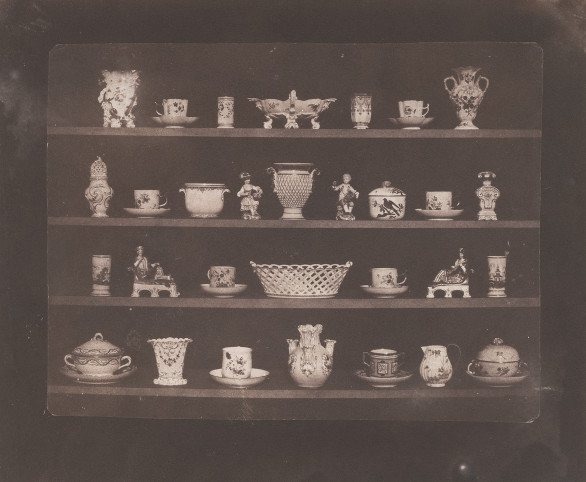 William Henry Fox Talbot (British, 1800-1877), Articles of China, ca. 1843, printed ca. 1845. Salted paper print from calotype negative. Collection of Richard and Ronay Menschel.
William Henry Fox Talbot (British, 1800-1877), Articles of China, ca. 1843, printed ca. 1845. Salted paper print from calotype negative. Collection of Richard and Ronay Menschel.
A century later, Harold Edgerton, an electrical engineer at the Massachusetts Institute of Technology, used the pulsing light of a stroboscope to record states of matter too fleeting for the naked eye. Gun Toss, an undated image of a spinning pistol, is not a multiple exposure: the camera shutter opened and closed just once. But during that fraction of a second, seven bright flashes of light committed to film a seven-episode history of the gun’s trajectory through space.
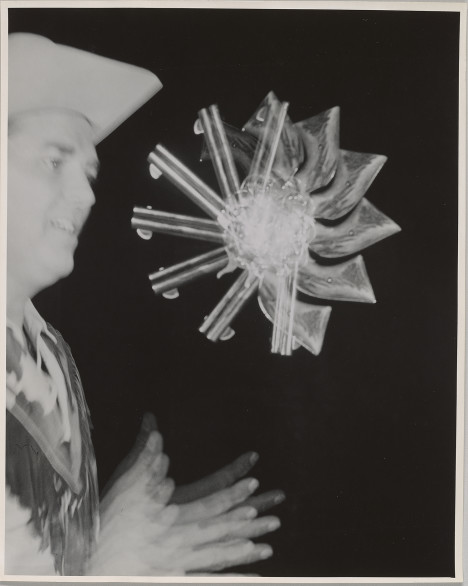 Harold Edgerton (American, 1903-1990), Gun Toss, n.d., Gelatin silver print. Collection of Richard and Ronay Menschel.
Harold Edgerton (American, 1903-1990), Gun Toss, n.d., Gelatin silver print. Collection of Richard and Ronay Menschel.
—————————————–
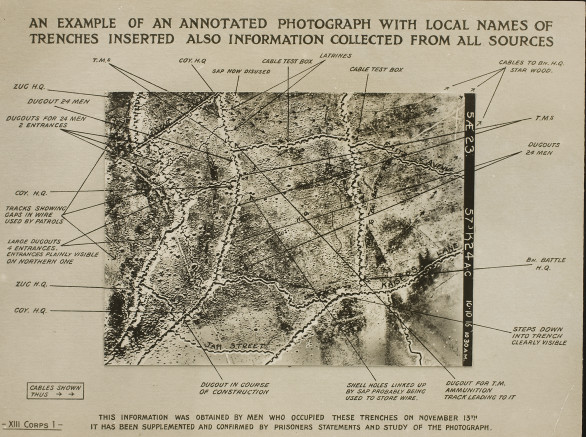 Unidentified maker, An Example of an Annotated Photograph with Local Names of Trenches Inserted, ca.1916. Gelatin silver print. George Eastman Museum.
Unidentified maker, An Example of an Annotated Photograph with Local Names of Trenches Inserted, ca.1916. Gelatin silver print. George Eastman Museum.
II. Crafting A Message
The camera is widely understood to be “truthful,” but what photographs “say” is a product of many procedures that follow the moment of exposure, including page layout, captioning, and cropping of the image. During World War I, military personnel learned to interpret the strange, abstract-looking images of enemy territory made from airplanes. Their specialized training fundamentally altered the nature of wartime reconnaissance, even as the unusual perspective unique to aerial photography introduced a new dialect into the expanding corpus of modern visual language. An Example of an Annotated Photograph with Local Names of Trenches Inserted (1916), on view in the exhibition, shows that the tools of ground strategy soon included artificial bunkers and trenches, designed purely to fool eyes in the sky.
In László Moholy-Nagy’s photocollages of the late 1920s, figures cut out of the plates in mass-market magazines appear in new configurations to convey messages of the artist’s devising. Images such as Massenpsychose (Mass Psychosis) (1927) propose a new kind of visual literacy for the machine age. To contemporary eyes, Moholy’s collages seem to foreshadow cut-and-paste strategies that would later characterize the visual culture of cyberspace.
 PhotoMetric Corporation, 1942–74 PhotoMetric Tailoring, ca. 1942–48 Gelatin silver prints. George Eastman Museum.
PhotoMetric Corporation, 1942–74 PhotoMetric Tailoring, ca. 1942–48 Gelatin silver prints. George Eastman Museum.
—————————————–
III. Photographs in Sequence
Photography’s debut in the late 1830s happened to coincide with the birth of the modern comic strip. Ultimately the narrative photo sequence would lead to the innovations that gave rise to cinema, another form of storytelling altogether. Exact contemporaries of one another, Eadweard J. Muybridge in the United States and Étienne-Jules Marey (1830–1904) in France both employed cameras to dissect human movement. Muybridge used a bank of cameras positioned to record a subject as it moved, tripping wires attached to the shutters. The result was a sequence of “stop-action” photographs that isolated gestures not otherwise visible in real time. Beginning in 1882, Marey pursued motion studies with a markedly different approach. In the works for which he is best known, he exposed one photographic plate multiple times at fixed intervals, recording the arc of movement in a single image.
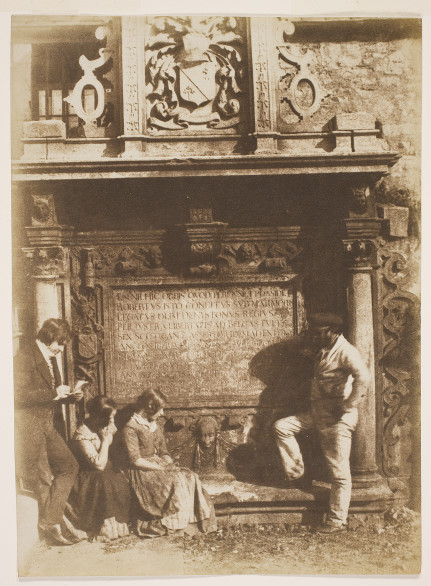 David Octavius Hill (Scottish, 1802–1870). Robert Adamson. Scottish, 1821–1848. The Artist and the Gravedigger (Denistoun Monument, Greyfriars Churchyard, Edinburgh), ca. 1845. Salted paper print from calotype negative. George Eastman Museum, Gift of Alvin Langdon Coburn.
David Octavius Hill (Scottish, 1802–1870). Robert Adamson. Scottish, 1821–1848. The Artist and the Gravedigger (Denistoun Monument, Greyfriars Churchyard, Edinburgh), ca. 1845. Salted paper print from calotype negative. George Eastman Museum, Gift of Alvin Langdon Coburn.
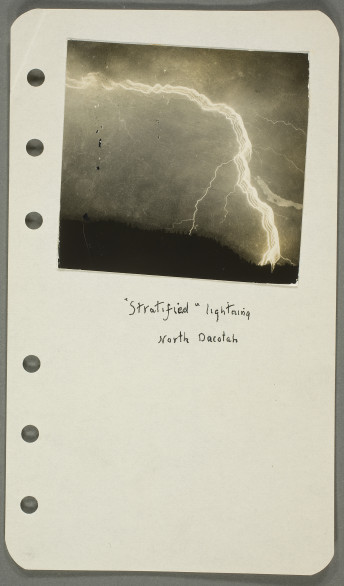 William N. Jennings (American, b. England, 1860–1946). Notebook pages with photographs of lightning, ca. 1887. Gelatin silver prints mounted onto bound notepad paper. George Eastman Museum, Gift of 3M Foundation; Ex-collection of Louis Walton Sipley.
William N. Jennings (American, b. England, 1860–1946). Notebook pages with photographs of lightning, ca. 1887. Gelatin silver prints mounted onto bound notepad paper. George Eastman Museum, Gift of 3M Foundation; Ex-collection of Louis Walton Sipley.
—————————————–
IV. The Legible Object
Some photographs speak for themselves; others function as the amplifier for objects that can literally be read through the image. In her series Sorted Books, American artist Nina Katchadourian (b. 1968) composes statements by combining the titles of books drawn from the shelves of libraries and collections. Indian History for Young Folks, 2012, shows three books from the turn of the twentieth century that she found in the Delaware Art Museum’s M.G. Sawyer Collection of Decorative Bindings. The viewer’s eye silently provides punctuation: “Indian history for young folks: Our village; your national parks.” Though at first glance it appears merely to arrange words into legible order, Katchadourian’s oblique statement—half verbal, half visual— would be incomplete if divorced from the physical apparatus of the books themselves.
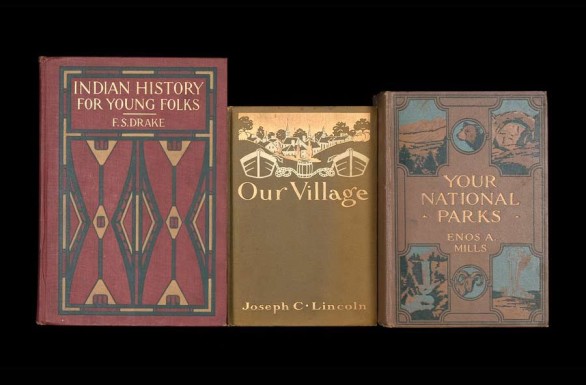 Nina Katchadourian (American, born 1968), Indian History for Young Folks, from Once Upon a Time in Delaware/In Quest of the Perfect Book, 2012. Chromogenic print. Purchased by the Photography Collectors Committee, The Morgan Library & Museum.
Nina Katchadourian (American, born 1968), Indian History for Young Folks, from Once Upon a Time in Delaware/In Quest of the Perfect Book, 2012. Chromogenic print. Purchased by the Photography Collectors Committee, The Morgan Library & Museum.
—————————————–
V. The Photograph Decodes Nature
As early as 1840, one year after photography’s invention was announced, scientists sought to deploy it in their analysis of the physical world. Combining the camera with the microscope, microphotographs recorded biological minutiae, leading to discoveries that would have been difficult, if not impossible, to obtain by observing subjects in real time. Similarly, the development of X-ray technology in 1895 allowed scientists to see and understand living anatomy to an unprecedented degree. Such innovations not only expanded the boundaries of the visible world but also introduced graphic concepts that would have a profound impact on visual culture. In other ways, too, nature has been transformed in human understanding through the interpretive filter of the lens, as seen in Sight Reading in the telescopic moon views of astronomers Maurice Loewy (1833–1907) and Pierre Henri Puiseux (1855–1928) and in the spellbinding aerial abstractions of William Garnett (1916–2006).
—————————————–
VI. The Photograph Decodes Culture
The photograph not only changed but to a great extent invented the modern notion of celebrity. Modern-age celebrities live apart from the general public, but their faces are more familiar than those of the neighbors next door. Since the mid-nineteenth century, viewers have come to “know” the famous through accumulated photographic sightings, which come in formats and contexts that vary as much as real-life encounters do. In four images that would have communicated instantly to their intended viewers in 1966, Jean-Pierre Ducatez (b. 1970) portrayed the Beatles through closeups of their mouths alone. The graphic shorthand employed by Jonathan Lewis in his series The Pixles is of a more recent variety, but he, too, relies on the visual familiarity conferred by tremendous celebrity. Each print in the series reproduces the iconic art of a Beatles album cover at life size (12 x 12 inches) but extremely low resolution (12 x 12 pixels). Like celebrities themselves, perhaps, the images look more familiar to the eye at a distance than close-up.
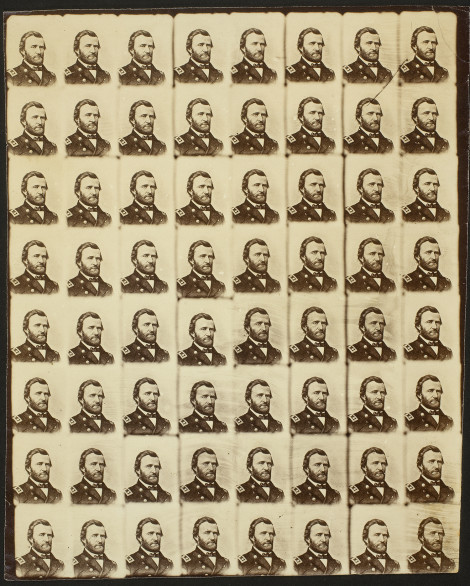 Unidentified maker U. S. Grant, ca. 1862. Albumen silver print. George Eastman Museum, Purchase.
Unidentified maker U. S. Grant, ca. 1862. Albumen silver print. George Eastman Museum, Purchase.
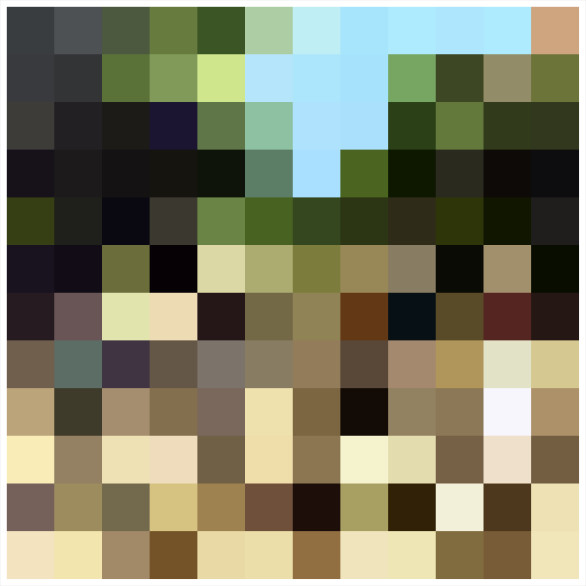 Jonathan Lewis (British, born 1970), Abbey Road From The Pixles, 2003, Inkjet print. George Eastman Museum, by exchange with the artist.
Jonathan Lewis (British, born 1970), Abbey Road From The Pixles, 2003, Inkjet print. George Eastman Museum, by exchange with the artist.
—————————————–
 Gravelle Studio, Indianapolis (American, active 1920), Joint Meeting of the Railway Surgeons Association, Claypool Hotel, Indianapolis, 1920, Gelatin silver print. Purchased as the gift of Peter J. Cohen, The Morgan Library & Museum.
Gravelle Studio, Indianapolis (American, active 1920), Joint Meeting of the Railway Surgeons Association, Claypool Hotel, Indianapolis, 1920, Gelatin silver print. Purchased as the gift of Peter J. Cohen, The Morgan Library & Museum.
VII. Meaning is on the Surface
Photographs are not just windows onto the world but pieces of paper, which can themselves be inscribed or otherwise altered in ways that enrich or amend their meaning. The group portrait Joint Meeting of the Railway Surgeons Association, Claypool Hotel, Indianapolis (1920) is contact printed, meaning that the negative was the same size as the print. After the portrait sitting, the photographer appears to have presented the developed film to the sixty-four sitters for signing during the three days they were assembled for their convention. The result is a document that unites two conventional signifiers of character: facial features and the autograph.
 Keith Smith (American, b. 1938). Book 151, 1989. Bound book of gelatin silver prints, thread, and leather Collection of Richard and Ronay Menschel.
Keith Smith (American, b. 1938). Book 151, 1989. Bound book of gelatin silver prints, thread, and leather Collection of Richard and Ronay Menschel.
—————————————–
VIII. Photography and the Page

Newspaper interview with Georges Ernest Jean Marie Boulanger (1837- 1891), French military and Royalist Political leader. Paul Nadar (French, 1856-1939), Interview with Georges Ernest Jean Marie Boulanger, 1889, Le Figaro, November 23, 1889, Photomechanical reproduction. George Eastman Museum, gift of Eastman Kodak Company, ex-collection Gabriel Cromer.
News of the world took on a newly visual character in the 1880s, when the technology of the halftone screen made it practical, at last, to render photographs in ink on the printed page.
Among the earliest examples of photojournalism is Paul Nadar’s (1820–1910) “photographic interview” with Georges Ernest Boulanger, a once-powerful French politician. The article’s introduction explains that the photographs were printed alongside the text in order to provide evidence of the encounter and to illustrate Boulanger’s dynamic body language during the conversation.
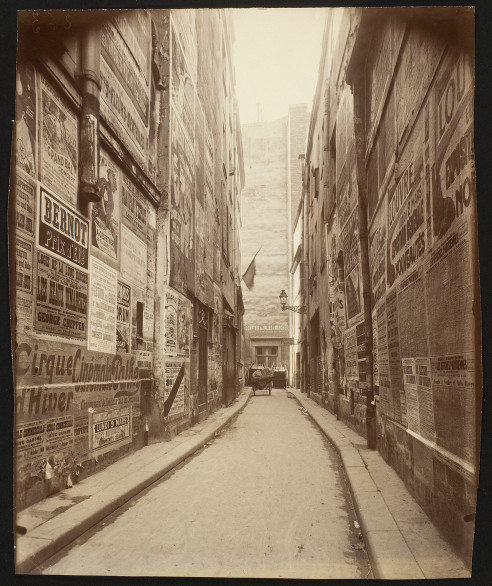 Eugène Atget (French, 1857–1927), Impasse des Bourdonnais, ca. 1908, Albumen silver print. George Eastman Museum, purchase.
Eugène Atget (French, 1857–1927), Impasse des Bourdonnais, ca. 1908, Albumen silver print. George Eastman Museum, purchase.
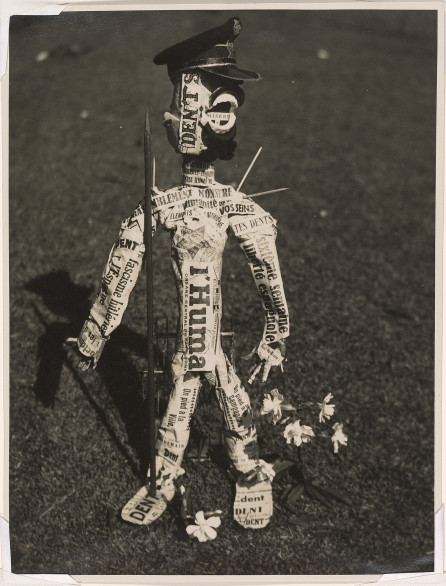 Claude Cahun (French, 1894–1954). La Poupée (Puppet), 1936. Gelatin silver print. Collection of Richard and Ronay Menschel.
Claude Cahun (French, 1894–1954). La Poupée (Puppet), 1936. Gelatin silver print. Collection of Richard and Ronay Menschel.
—————————————–
IX. Empire of Signs
The plethora of signs, symbols, and visual noise endemic to cities has attracted photographers since the medium’s invention. Their records of advertisers’ strident demands for attention, shopkeepers’ alluring displays, and the often dizzying architectural density of metropolitan life chronicle sights that are subject to change without notice. The photographer’s perspective on contemporary social life—whether it is anectodal, as in John Thompson’s (1837–1921) Street Advertising from Street Life in London (1877), or haunting, as in Eugène Atget’s (1857–1927) Impasse des Bourdonnais (ca. 1908)—is embedded in each image.
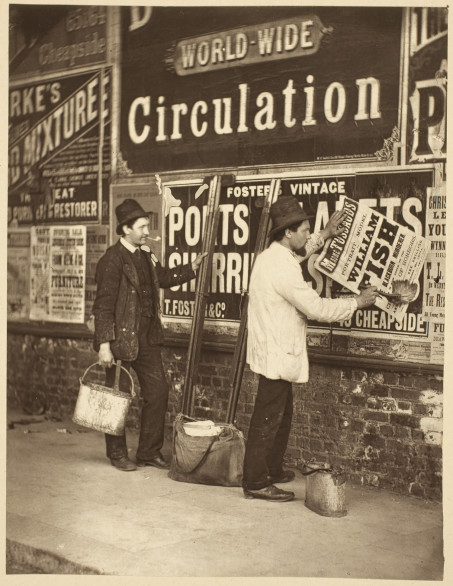 John Thomson (Scottish, 1837–1921). Street Advertising. From Street Life in London, 1877. Woodburytype. George Eastman Museum, Gift of Alden Scott Boyer.
John Thomson (Scottish, 1837–1921). Street Advertising. From Street Life in London, 1877. Woodburytype. George Eastman Museum, Gift of Alden Scott Boyer.
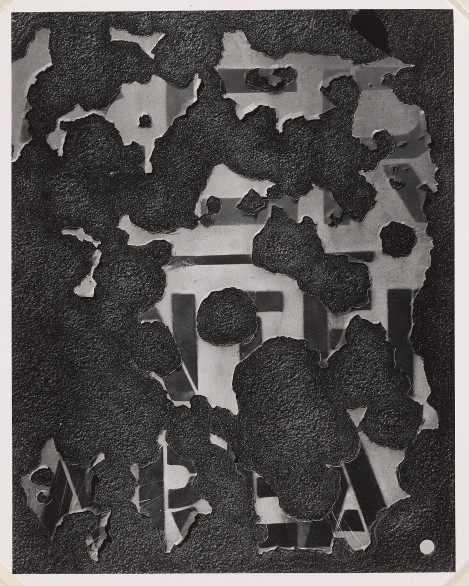 Aaron Siskind (American, 1903–1991). New York 6, 1951. Gelatin silver print. The Morgan Library & Museum, Gift of Richard and Ronay Menschel.
Aaron Siskind (American, 1903–1991). New York 6, 1951. Gelatin silver print. The Morgan Library & Museum, Gift of Richard and Ronay Menschel.
 Stephen Henry Horgan (American, 1854–1941). Shanty Town, April 1880. Photomechanical printing plate.
Stephen Henry Horgan (American, 1854–1941). Shanty Town, April 1880. Photomechanical printing plate.
~~~~~~~~~~~~~~~~~~~~~~~~~~~~~~~~~~~~~~
—————————————–
PUBLIC PROGRAMS
GALLERY TALK
Sight Reading: Photography and the Legible World
Joel Smith, Richard L. Menschel Curator and Department Head, Photography.
Friday, February 26, 6:30 pm
Tickets: All gallery talks and tours are free with museum admission; no tickets or reservations necessary.
——————-
FILM
Eadweard
Directed by Kyle Rideout (2015, 104 minutes)
How do you capture a moment? Kyle Rideout’s biopic Eadweard shows how this question becomes an obsession of one of the forefathers of motion pictures, Eadweard Muybridge. In 1872, Muybridge reveals his first study of animal locomotion: a horse in motion. In this impressive feature debut, Rideout uses time-lapse photography, jump cuts, and slow motion to recreate the magic of Muybridge’s photography.
The exhibition Sight Reading: Photography and the Legible World will open for program attendees before the event.
Friday, March 18, 7 pm
Tickets: Exhibition-related films are free with museum admission. Advance reservations for members only. Tickets are available at the Admission Desk on the day of the screening.
——————-
GALLERY TALK
Sight Reading: Photography and the Legible World
Joel Smith, Richard L. Menschel Curator and Department Head, Photography.
Friday, April 1, 1 pm
——————-
DISCUSSION
Sight Writing: A Conversation
Tickets: All gallery talks and tours are free with museum admission; no tickets or reservations necessary.
Nina Katchadourian, Jonathan Lewis, Duane Michals, John Pfahl
Four artists in the exhibition Sight Reading discuss rewriting the rules of photography. With their overtly staged, sequenced, idea-driven photographs, Duane Michals and John Pfahl dramatically expanded the imaginative range of the medium in the 1960s–1970s. For Nina Katchadourian and Jonathan Lewis, who were born in that era, photography provides only one of many ways to work in a very different, densely networked media environment.
The exhibition Sight Reading: Photography and the Legible World will be open for program attendees before the event and until 6 pm.
Saturday, April 16, 2 pm
Tickets: $15; $10 for members; free for students with valid ID
——————-
Organization and Sponsorship
Sight Reading is co-organized by the Morgan Library & Museum and the George Eastman Museum, Rochester. The exhibition is curated by Joel Smith, the Richard L. Menschel Curator of Photography at the Morgan Library & Museum, and Lisa Hostetler, Curator in Charge, Department of Photography, the George Eastman Museum, Rochester.
The exhibition in New York is made possible by Jane P. Watkins.
——————-
The programs of the Morgan Library & Museum are made possible with public funds from the New York City Department of Cultural Affairs in partnership with the City Council, and by the New York State Council on the Arts with the support of Governor Andrew Cuomo and the New York State Legislature.
~~~~~~~~~~~~~~~~~~~~~~~~~~~~~~~~~~~~~~~~~~~~
The Morgan Library & Museum
The Morgan Library & Museum began as the private library of financier Pierpont Morgan (1837– 1913), one of the preeminent art collectors and cultural benefactors in the United States. Today, more than a century after its founding in 1906, the Morgan serves as a museum, independent research library, music venue, architectural landmark, and historic site. In October 2010, the Morgan completed the first-ever restoration of its original McKim building, Pierpont Morgan’s private library, and the core of the institution. In tandem with the 2006 expansion project by architect Renzo Piano, the Morgan now provides visitors unprecedented access to its world- renowned collections of drawings, literary and historical manuscripts, musical scores, medieval and Renaissance manuscripts, printed books, photography, and ancient Near Eastern seals and tablets.
—————————————————————–
General Information
The Morgan Library & Museum
225 Madison Avenue, at 36th Street, New York, NY 10016-3405 212.685.0008
www.themorgan.org
Just a short walk from Grand Central and Penn Station
Hours
Tuesday–Thursday, 10:30 a.m. to 5 p.m.; extended Friday hours, 10:30 a.m. to 9 p.m.; Saturday, 10 a.m. to 6 p.m.; Sunday, 11 a.m. to 6 p.m.; closed Mondays, Thanksgiving Day, Christmas Day, and New Year’s Day. The Morgan closes at 4 p.m. on Christmas Eve and New Year’s Eve. The Morgan is open on select Holiday Mondays, including President’s Day and Memorial Day.
Admission
$18 for adults; $12 for students, seniors (65 and over), and children (under 16); free to members and children 12 and under accompanied by an adult. Admission is free on Fridays from 7 to 9 p.m. Admission is not required to visit the Morgan Shop, Café, or Dining Room.
www.themorgan.org
________________________________________________________

